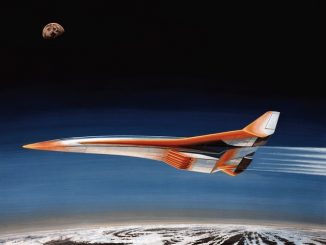Chicago’s proposed third airport has been under discussion since the 1960s. But, as another year begins, the planned site in outlying Peotone, Ill., continues to host cornfields rather than runways.
Supporters of the proposed airport say it would relieve congestion at Chicago’s two existing airports, Chicago O’Hare International Airport and Chicago Midway International Airport. In recent years, both airports have struggled with air traffic and pollution issues. According to the Bureau of Transportation Statistics, in the year ending September 2011, there were 375,176 domestic flights departing from O’Hare, making it the second busiest airport in the country by number of flights. An additional 89,173 flights left from Midway.
The proposed airport, to be located south of the city, would reduce travel times for many suburban residents. The city’s southern suburbs have been growing, largely driven by an influx of residents relocating from within the city.
The primary obstacle to the airport is that citizens of Peotone and surrounding Will County don’t want it. Farmers worry about water supply contamination. Others are more concerned with the urban sprawl they fear would creep over their fairly rural area. So, although the Illinois Department of Transportation has bought up about 2,400 acres of land for the airport since 2002, there is still no start to construction in sight.
On the surface, this seems to be a typical case of not-in-my-backyard syndrome, or nimbyism, where residents of a small area block a project that would serve the larger community. But this time I’m not convinced that the project nearby residents oppose really would be for the greater good.
When I wrote recently about airline baggage fees, I mentioned the tendency for airlines to monopolize certain “hub” cities. This practice prevents competition from acting to improve service or bring down prices. Chicago provides an interesting case study of the hub system in action. United Airlines and American, including its affiliate American Eagle, together carry almost two thirds of the passengers who travel through O’Hare. No other airline has more than a small hold on the airport’s market. Midway, meanwhile, is Southwest territory. In the year ending last September, 88 percent of arrivals and departures at Midway were Southwest passengers.
Some proponents of the new airport, including the Suburban O’Hare Commission – itself a nimbyist group that formed to fight proposed expansion at O’Hare – have argued that a third airport could help deconstruct United and American’s stronghold by providing additional capacity for potential competitors. In a 2000 report, the Commission acknowledged that, up to that point, the other five members of air travel’s then-Big Seven had been reluctant to say they would use the new airport if it were built, but it suggested that antitrust action could rectify that. (Instead, industry economics has since reduced those seven airlines to four, as Continental merged with United, American acquired TWA and Delta absorbed Northwest. The other player is USAir, which tried but failed to combine with United during the last decade. Southwest does not fly to O’Hare, and JetBlue was just a small startup back in 2000.)
It seems to me that expansion at O’Hare nevertheless offers the better chance of denting the hub system and improving service for customers. Like the proposed third airport, expansion at O’Hare has been under discussion for years with minimal action. Under a deal struck last March, the parties have until March 2013 to negotiate details of the plan.
I flew through O’Hare last spring, something I usually try to avoid, and found it to be in sorry shape. That’s not surprising, considering that United went through bankruptcy in the years following 9/11, and American just filed for bankruptcy last year. The passenger facilities there are suffering from a serious lack of long-term investment. Creating space for more domestic airlines, including JetBlue and potentially Southwest, could bring much-needed money, both to give the airport a facelift and to address deeper air traffic and pollution concerns.
Solving the capacity problem by building a brand-new airport, on the other hand, would shunt potential competitors elsewhere, as has already happened with Southwest at Midway, leaving O’Hare to decay in the hands of United and American. It would also put these new players in the market at a competitive disadvantage, since they would have a much harder time attracting connecting passengers, who might prefer to come in on a foreign airline or a domestic competitor like JetBlue but need to fly out on United or American to reach their final destinations.
Even if it is necessary to divert some traffic away from O’Hare and Midway, it does not necessarily follow that the only solution is to build a whole new airport. Just about 30 miles from downtown Chicago – closer than Peotone – is another existing airport that is alreadyundergoing its own $153 million expansion. The problem is that something lies between that airport and Chicago that’s not between Chicago and Peotone: a state border. The airport I’m talking about is in Gary, Ind.
The Gary Chicago International Airport expansion project has its own problems, namely several railroad tracks that currently cross the would-be new runway. Illinois politicians could lend their support to the Gary airport to help get those tracks moved. But that would mean letting federal dollars and jobs, as well as planes, cross the state line. I’m not going to hold my breath waiting for that to happen.
For the foreseeable future, then, expect congestion and delays at Chicago’s airports, as well as in any talks about how to fix them.
- Bulenox: Get 45% to 91% OFF ... Use Discount Code: UNO
- Risk Our Money Not Yours | Get 50% to 90% OFF ... Use Discount Code: MMBVBKSM
Disclaimer: This page contains affiliate links. If you choose to make a purchase after clicking a link, we may receive a commission at no additional cost to you. Thank you for your support!




Leave a Reply